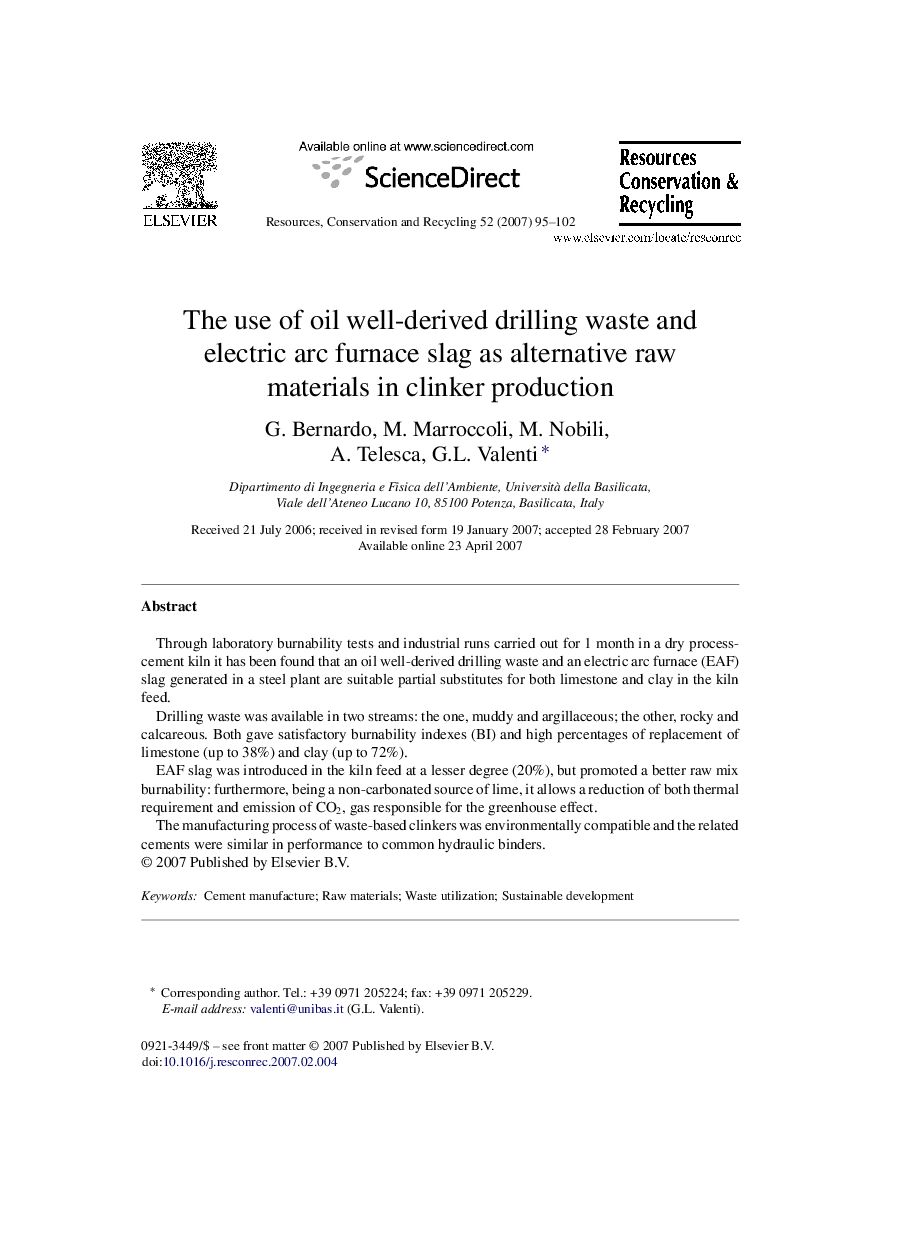| Article ID | Journal | Published Year | Pages | File Type |
|---|---|---|---|---|
| 1064034 | Resources, Conservation and Recycling | 2007 | 8 Pages |
Through laboratory burnability tests and industrial runs carried out for 1 month in a dry process-cement kiln it has been found that an oil well-derived drilling waste and an electric arc furnace (EAF) slag generated in a steel plant are suitable partial substitutes for both limestone and clay in the kiln feed.Drilling waste was available in two streams: the one, muddy and argillaceous; the other, rocky and calcareous. Both gave satisfactory burnability indexes (BI) and high percentages of replacement of limestone (up to 38%) and clay (up to 72%).EAF slag was introduced in the kiln feed at a lesser degree (20%), but promoted a better raw mix burnability: furthermore, being a non-carbonated source of lime, it allows a reduction of both thermal requirement and emission of CO2, gas responsible for the greenhouse effect.The manufacturing process of waste-based clinkers was environmentally compatible and the related cements were similar in performance to common hydraulic binders.
